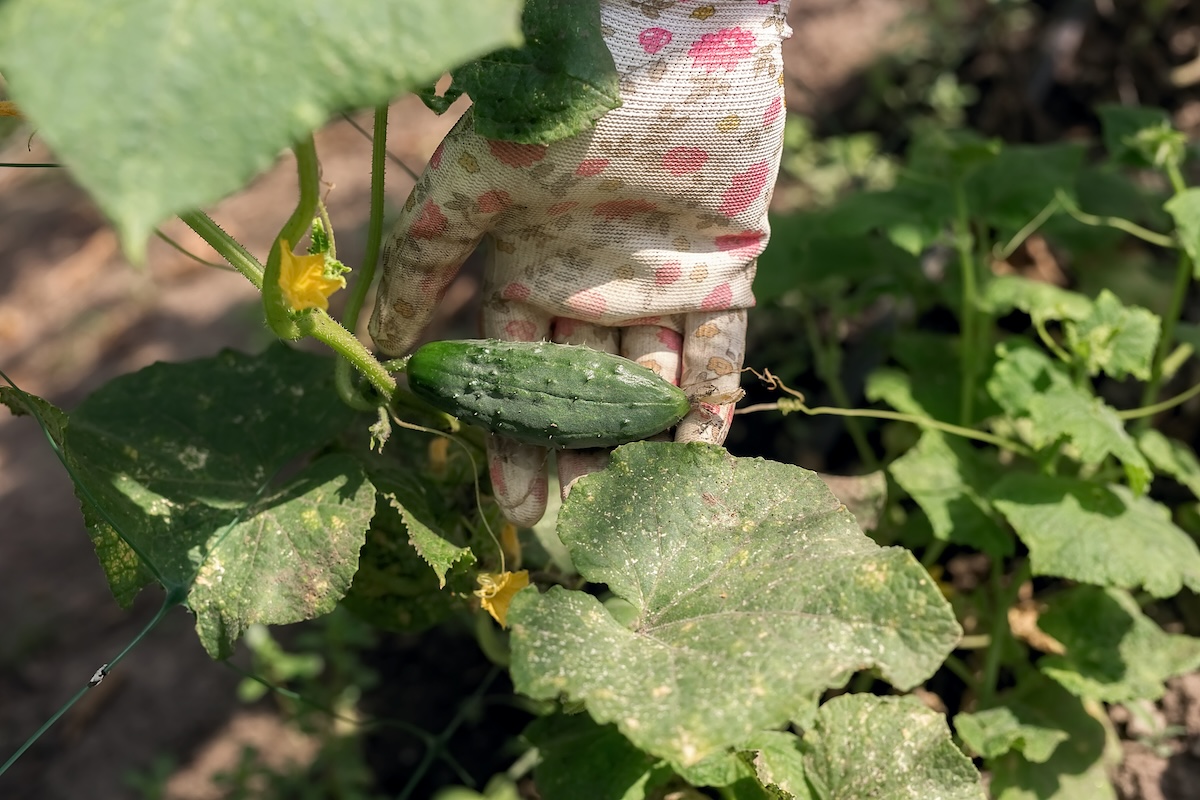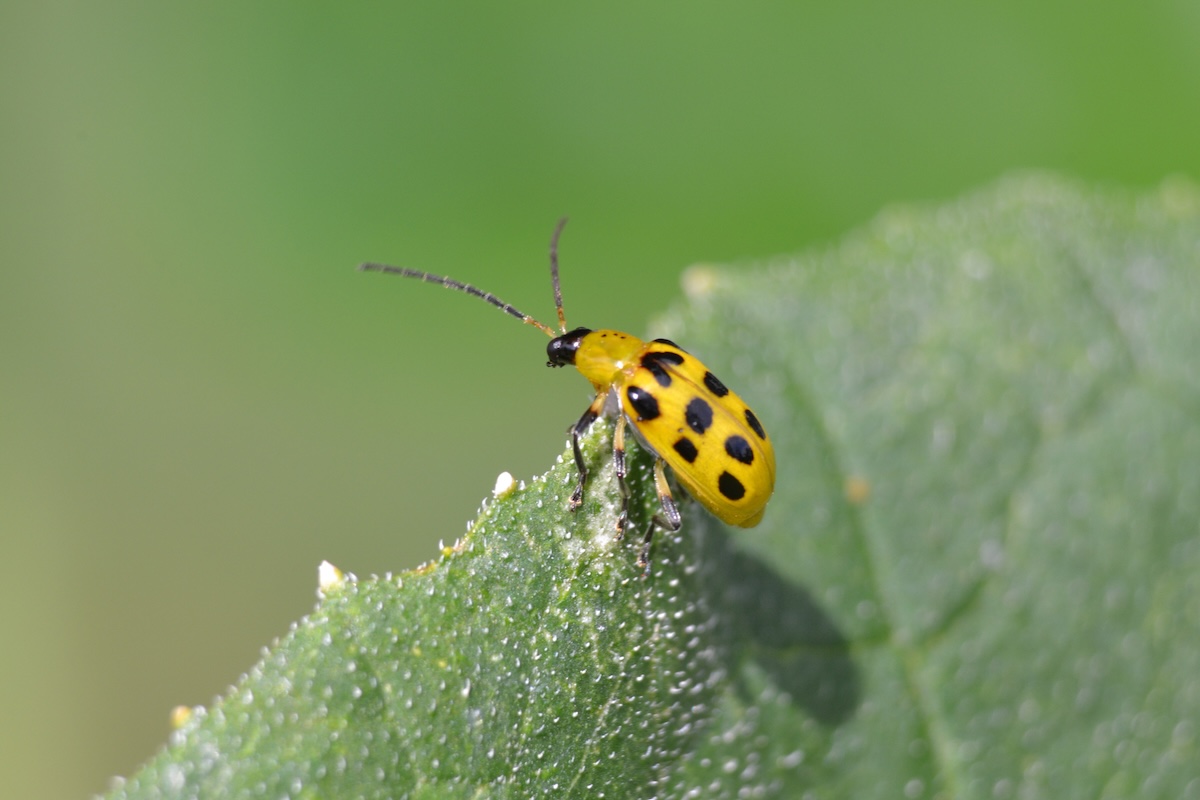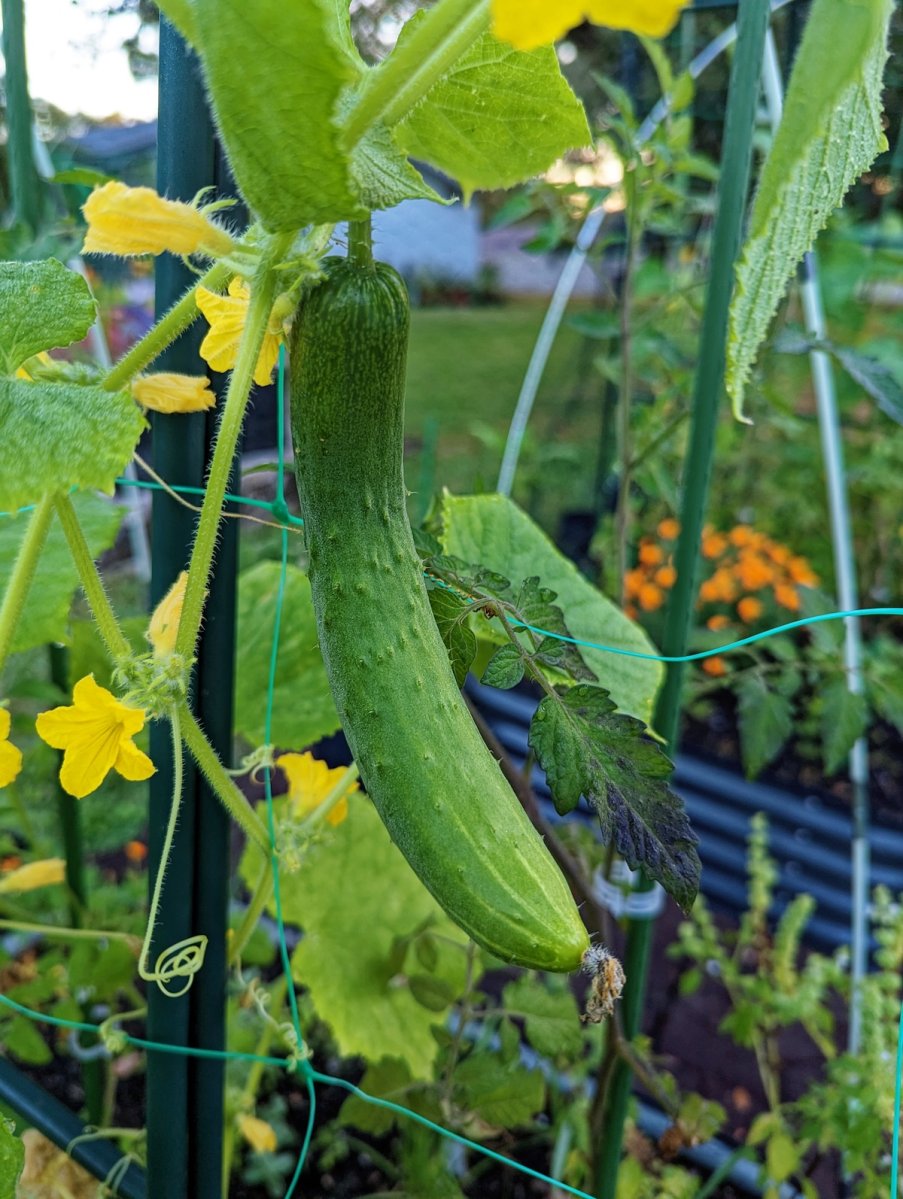

We may earn revenue from the products available on this page and participate in affiliate programs. Learn More ›
With crop rotation, you avoid planting the same vegetables in the same places every year. In fact, Iowa State University Extension notes that “For crop rotation to be most effective, gardeners should not plant vegetables belonging to the same plant family in the same location for 3 to 4 years.” They add that even if you lack some of the space to spread out your planting locations each year, any crop rotation efforts are beneficial for plants.
Since favorite edibles like cucumbers, melons, and squashes all belong to the cucurbit family, crop rotation is one of those practices more easily said than done. However, if you ignore it, you might—like me—end up with some major cucumber plant problems.
How Crop Rotation Is Supposed to Work
Crop rotation works best when you have several different garden beds, all of which get plenty of light and are distant from each other. Unfortunately, since flower gardening is my passion, I only have one vegetable bed, and I even manage to sneak cutting flowers in there.
Although my vegetable bed is a large plot, it is sunnier on the east side than on the west. So, I always give the tomatoes the brightest spot, the vining crops the next brightest, etc., which means they all end up in or near the same location every year.

Consequences of Not Rotating Crops
Because the cucurbits all belong to the same family, these creeping and sometimes climbing vegetables all attract the same sorts of pests, especially cucumber beetles. And those pests hang around and complete their life cycle in expectation of next year’s crops.
So, although I had good yields the first year I planted cucurbits, things went downhill from there. These days, vining plants tend to start out well for me before suddenly wilting and expiring, apparently victims of the bacterial wilt disease spread by cucumber beetles. Cucumbers and muskmelons are most vulnerable to the disease, though squashes can contract it too. Watermelons usually don’t.
Making Crop Rotation Work for Your Garden
Unless I turn flower beds into vegetable beds, I’ll have to keep looking for other ways besides crop rotation to discourage the beetles if I want to grow cucumbers and other cucurbits. But those of you who have adequate space and light should keep track of where you plant members of each family from year to year so you can rotate your crop families. Since adult cucumber beetles overwinter in leaf debris at the edges of your garden, with the bacteria that causes the disease in their digestive systems, you should remove as much of the debris as possible during fall cleanup.

An Alternative: Planting Late to Avoid Beetles
This year I had to plant late due to an extremely wet spring and must have unwittingly outsmarted the beetles. They usually emerge from their leaf litter in late spring every year just in time to lay their eggs beside new seedlings or transplants. Apparently, if there are no such tender, young plants available for them to eat, they depart to find some.
I tried covering my squash plants with row cover for a couple weeks to keep the beetles off, but didn’t actually see many. So, I’m guessing that my planting in mid-June instead of late May befuddled them.
Other Methods of Preventing Bacterial Wilt Disease
Besides planting late and swathing the plants with row cover until they bloom, other suggested methods for dealing with cucumber beetles include a trap crop such as Blue Hubbard squash; companion plants that attract beneficial insects to prey on the beetles; and a straw mulch, which discourages their egg laying. It also helps to choose cultivars bred to be resistant to bacterial wilt.
This year, I planted cucumber vines in a large container instead of in the garden. They still wilt, because I’m always forgetting to water them, but at least they recover from that sort of swoon.
